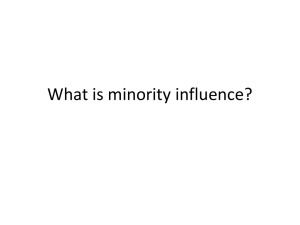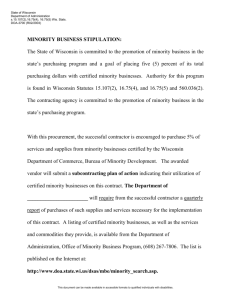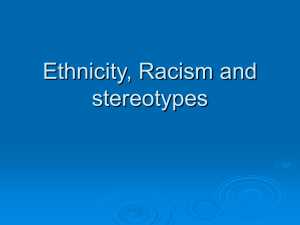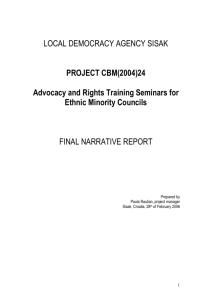Migration and Minority Representation in Comparative
advertisement
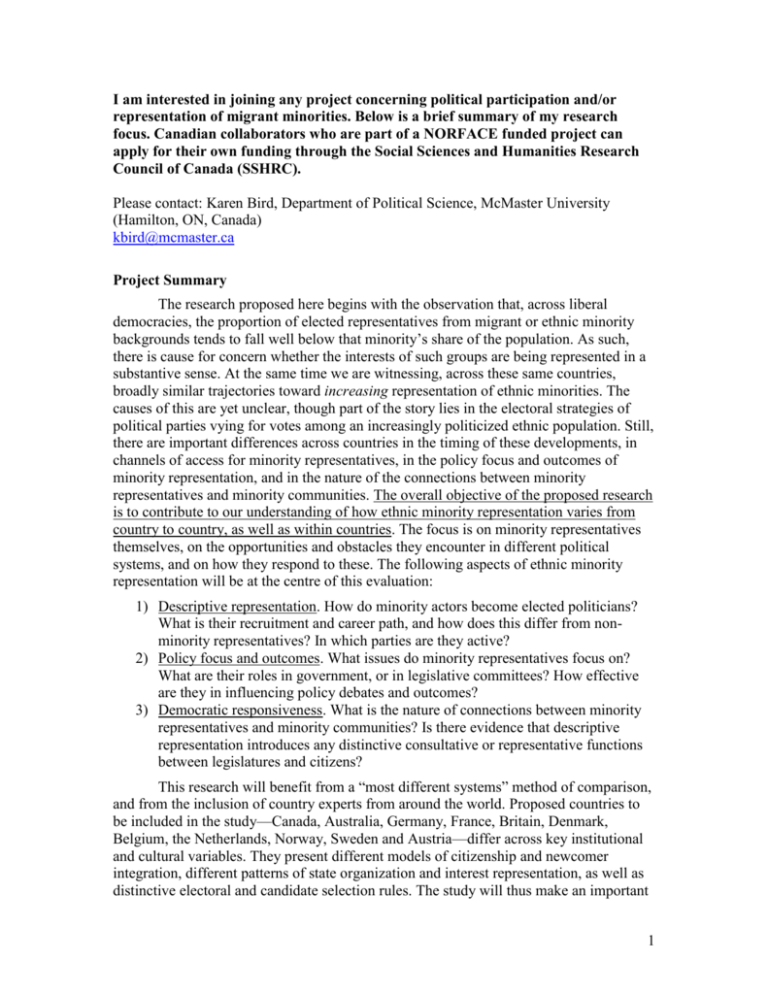
I am interested in joining any project concerning political participation and/or representation of migrant minorities. Below is a brief summary of my research focus. Canadian collaborators who are part of a NORFACE funded project can apply for their own funding through the Social Sciences and Humanities Research Council of Canada (SSHRC). Please contact: Karen Bird, Department of Political Science, McMaster University (Hamilton, ON, Canada) kbird@mcmaster.ca Project Summary The research proposed here begins with the observation that, across liberal democracies, the proportion of elected representatives from migrant or ethnic minority backgrounds tends to fall well below that minority’s share of the population. As such, there is cause for concern whether the interests of such groups are being represented in a substantive sense. At the same time we are witnessing, across these same countries, broadly similar trajectories toward increasing representation of ethnic minorities. The causes of this are yet unclear, though part of the story lies in the electoral strategies of political parties vying for votes among an increasingly politicized ethnic population. Still, there are important differences across countries in the timing of these developments, in channels of access for minority representatives, in the policy focus and outcomes of minority representation, and in the nature of the connections between minority representatives and minority communities. The overall objective of the proposed research is to contribute to our understanding of how ethnic minority representation varies from country to country, as well as within countries. The focus is on minority representatives themselves, on the opportunities and obstacles they encounter in different political systems, and on how they respond to these. The following aspects of ethnic minority representation will be at the centre of this evaluation: 1) Descriptive representation. How do minority actors become elected politicians? What is their recruitment and career path, and how does this differ from nonminority representatives? In which parties are they active? 2) Policy focus and outcomes. What issues do minority representatives focus on? What are their roles in government, or in legislative committees? How effective are they in influencing policy debates and outcomes? 3) Democratic responsiveness. What is the nature of connections between minority representatives and minority communities? Is there evidence that descriptive representation introduces any distinctive consultative or representative functions between legislatures and citizens? This research will benefit from a “most different systems” method of comparison, and from the inclusion of country experts from around the world. Proposed countries to be included in the study—Canada, Australia, Germany, France, Britain, Denmark, Belgium, the Netherlands, Norway, Sweden and Austria—differ across key institutional and cultural variables. They present different models of citizenship and newcomer integration, different patterns of state organization and interest representation, as well as distinctive electoral and candidate selection rules. The study will thus make an important 1 contribution to understanding how variations in political-institutional context, as well as patterns of migration and multiculturalism influence minority representation in politics. The proposed research addresses the under-representation of ethnic minorities in politics, but also can contribute to understanding broader problems of political alienation, segregation, protest and violence among minority communities. As such, there is a wide audience beyond academics whom we hope to engage with this research. This includes community organizations actively promoting political inclusion and social justice for minority communities, as well as parties and other political actors. 2



